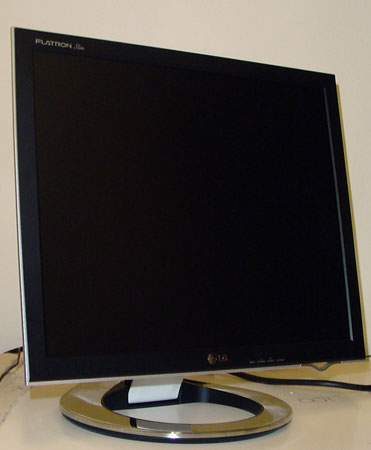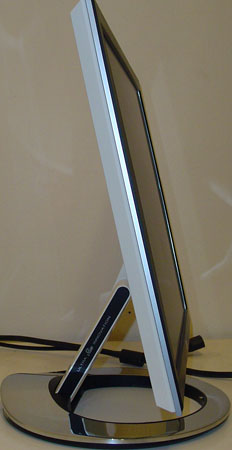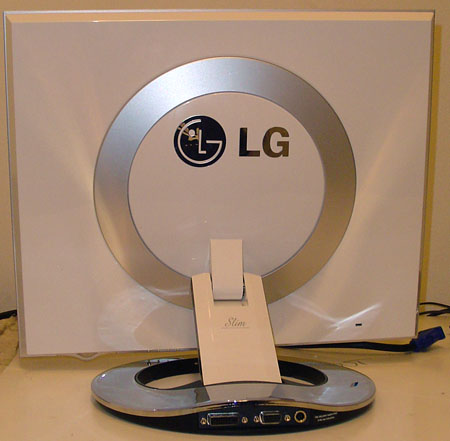LG L1980U LCD: The New 19" Panel on the Block
by Kristopher Kubicki on May 13, 2005 4:00 PM EST- Posted in
- Displays
Construction
Our Flatron L1980U bears a striking resemblance to the Samsung 193P display that we reviewed over a year ago. Both displays use internally housed cable management that run down the rear of the unit, external power supplies and nice, round curving bezels behind the monitor. The LG unit is actually slightly thinner than the SyncMaster 193P, but does not have a universal joint attached to the base. Hence, this display only tilts along the X axis and pivots along the Y axis. The L1980U boasts the specifications listed below:| LG Flatron L1980U | |
| Advertised LCD | 19" SXGA LCD (Active Matrix) pixel pitch: 0.294mm Anti-glare coating TN 6-bit LCD Panel |
| Advertised Scanning Frequency | Horizontal: 30-83kHz Vertical: 56-75Hz |
| Advertised Response Time | 12ms (Typical Gray to Gray) |
| Advertised Viewing Angle | 160 / 160 (Horizontal / Vertical) |
| Advertised Contrast Ratio | 500:1 (Typical) |
| Advertised Compatibility | 1280 x 1024 (Native) |
| Advertised Brightness | 250 cd/m2 |
| Advertised Warranty | 3 years parts and labor |
The first thing that you may notice is the 12ms advertised response time. Unfortunately, there is a growing trend with display manufacturers to not mention whether or not the response time is gray-to-gray (GTG) or average (TrTf) response time. LG.Philips LCD also lists this panel as a 12ms response time unit, but then again, they also list the previous generation panels as 12ms too (the same panel used in our 16ms Sharp LL-191A-B). After much investigation, we determined that the response time was actually 12ms average (TrTf - Time rising, Time falling) response time, but LGE typically advertises the display as an 8ms unit. This is still technically correct, since the display does in fact take 8ms for the Tr (Time rising) – although this does not seem to be explicitly mentioned anywhere convenient. Just keep in mind that this is a low response time LCD, but not lower than other displays that we’ve seen in the past.
Clever marketing aside, there are some other interesting aspects of this display. This is one of the slimmest displays that we have seen to date, and when folded into the monitor, it is only four inches high. The monitor comes with an extra VESA compatible mount plate that can be attached to the base of the unit if you plan on attaching the L1980U to the wall or a VESA arm. Below, you can see another shot of the awesome cable management running down the rear of the display.
Like most LCDs that use intelligent cable management, the LGE L1980U requires an external inverter brick. Using a Kill-A-Watt device to measure power consumption, we found that the display uses 43W when on and just under 2W when on standby (just as the LGE website states). Like the Samsung 193P, there are no exhaust portals on the monitor either. The majority of heat generated in an LCD comes from the AC inverter, so we were not surprised that LG was able to pull this off.













21 Comments
View All Comments
ryanlun - Friday, May 13, 2005 - link
In Soviet Russia, cable manages YOU!!!!!